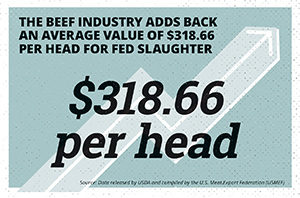 In fiscal year 2018, the Beef Checkoff program invested checkoff funds of $7.36 million in foreign marketing and education because exports represent a significant growth opportunity for U.S. beef producers. By selling U.S. beef in more than 80 countries worldwide, the beef industry adds back an average value of $318.66 per head for fed slaughter to U.S. beef producers, according to data released by United States Department of Agriculture (USDA) and compiled by the U.S. Meat Export Federation (USMEF). USDA research also showed, from January through August 2018, beef export value climbed 18 percent from a year ago to $5.51 billion.
In fiscal year 2018, the Beef Checkoff program invested checkoff funds of $7.36 million in foreign marketing and education because exports represent a significant growth opportunity for U.S. beef producers. By selling U.S. beef in more than 80 countries worldwide, the beef industry adds back an average value of $318.66 per head for fed slaughter to U.S. beef producers, according to data released by United States Department of Agriculture (USDA) and compiled by the U.S. Meat Export Federation (USMEF). USDA research also showed, from January through August 2018, beef export value climbed 18 percent from a year ago to $5.51 billion.
China provides an interesting example of how beef exports benefit the U.S. beef industry. China was one of only a few international markets that never reopened to U.S. beef following the 2003 bovine spongiform encephalopathy (BSE) case — but that changed in June 2017, as the U.S. and China announced a long-awaited market reopening.
U.S. beef exports to South Korea also received a major boost in fiscal year 2017 when Costco officially converted the imported chilled beef selection at all 15 of its Korean locations from Australian product to 100 percent U.S. beef. The move followed multi-year, checkoff-funded efforts to both restore consumer confidence in U.S. beef and persuade Costco executives that U.S. beef sales would match or exceed those of Australian beef. Costco’s move represents about 33.1 million pounds of incremental new beef business in 2017 alone, with additional growth opportunities.
“The value of exports exceeds the value of imports for a similar volume of product because exports command a higher per-pound price,” said Laurie Bryant, Cattlemen’s Beef Board member. “In other words, importing beef creates a net increase for the U.S. beef industry by allowing us to export more high-value beef.”
The export/import landscape is a nuanced balancing act. Importing beef creates a net increase for the U.S. beef industry by allowing us to export more high-value beef.

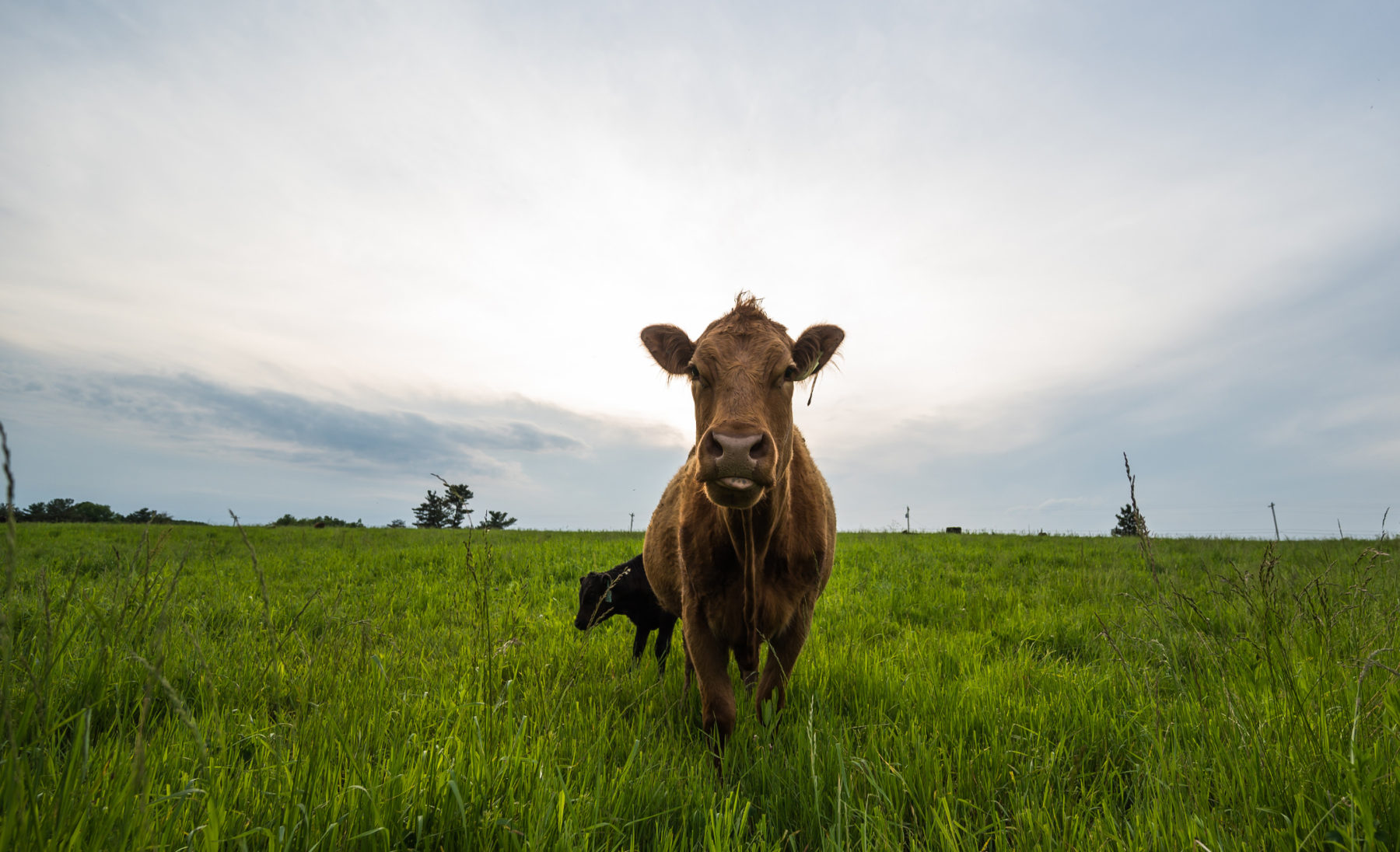
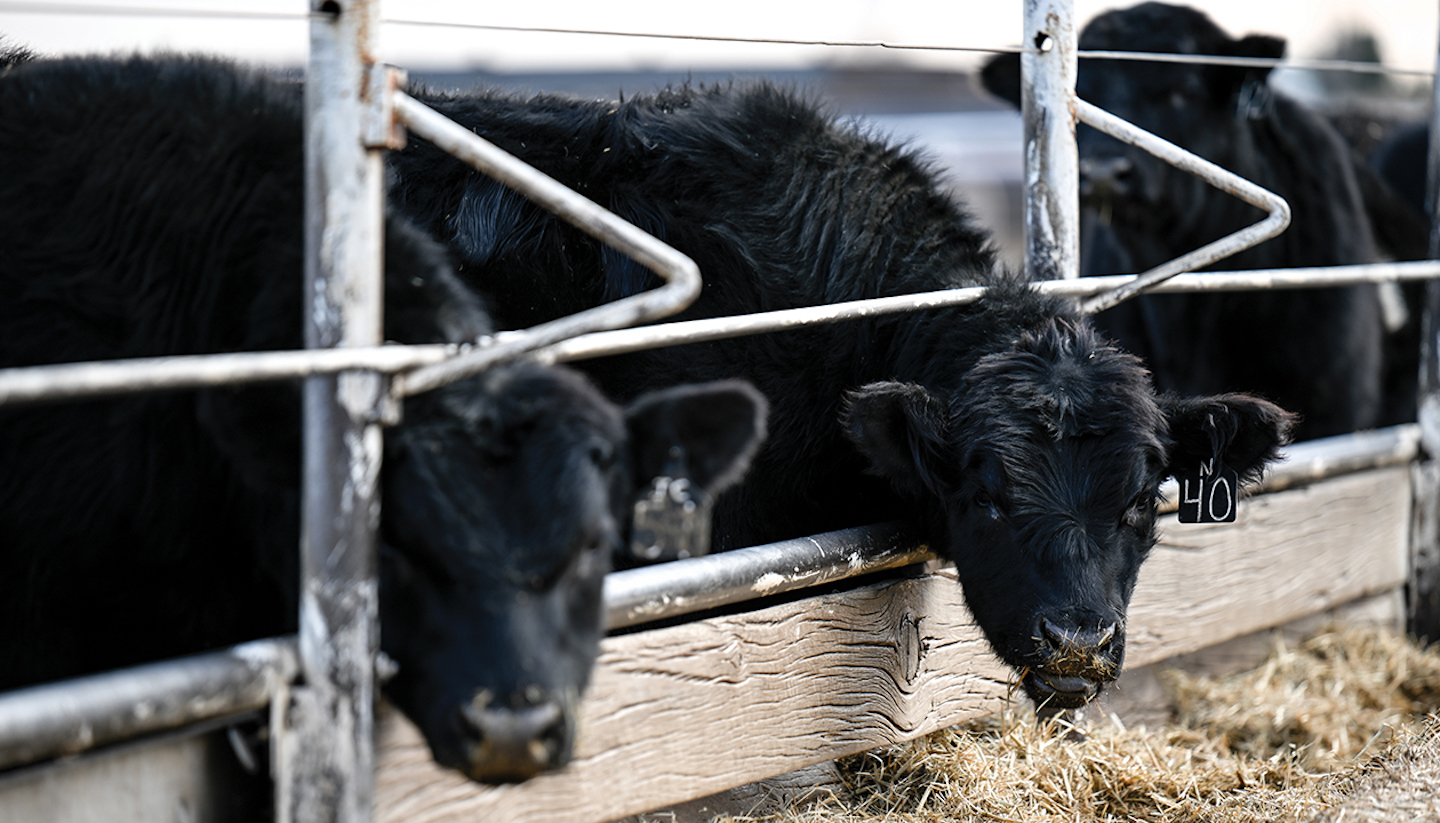
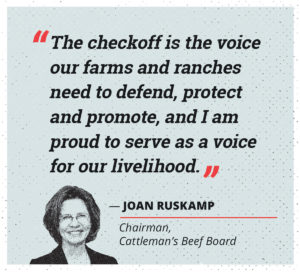 Learning to drive – often at a very young age – is less about desire and more about necessity when you grow up in the country. This is as true today as it was several decades ago; some learn on tractors, pickups, grain trucks or ATVs. In my memory, I can assure you that my dad pulled together every last thread of his patience as he taught me how to drive the family station wagon, and I knew I had better sit up straight, pay attention and realize the responsibility I now held in my hands. It’s a rite of passage and a big part of our ranching way of life.
Learning to drive – often at a very young age – is less about desire and more about necessity when you grow up in the country. This is as true today as it was several decades ago; some learn on tractors, pickups, grain trucks or ATVs. In my memory, I can assure you that my dad pulled together every last thread of his patience as he taught me how to drive the family station wagon, and I knew I had better sit up straight, pay attention and realize the responsibility I now held in my hands. It’s a rite of passage and a big part of our ranching way of life.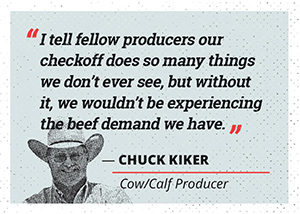 As the old saying goes, “knowledge is power.” It is difficult to advocate for any organization unless you truly understand it. We recently sat down with Chuck Kiker, a cow/calf producer from Beaumont, Texas, to learn more about his first encounter with the Beef Checkoff and his journey from knowing little about the program to understanding and fully supporting it.
As the old saying goes, “knowledge is power.” It is difficult to advocate for any organization unless you truly understand it. We recently sat down with Chuck Kiker, a cow/calf producer from Beaumont, Texas, to learn more about his first encounter with the Beef Checkoff and his journey from knowing little about the program to understanding and fully supporting it.